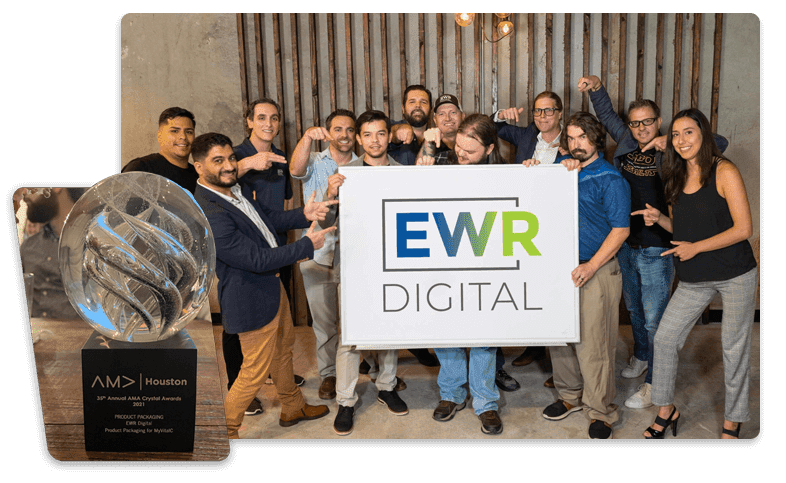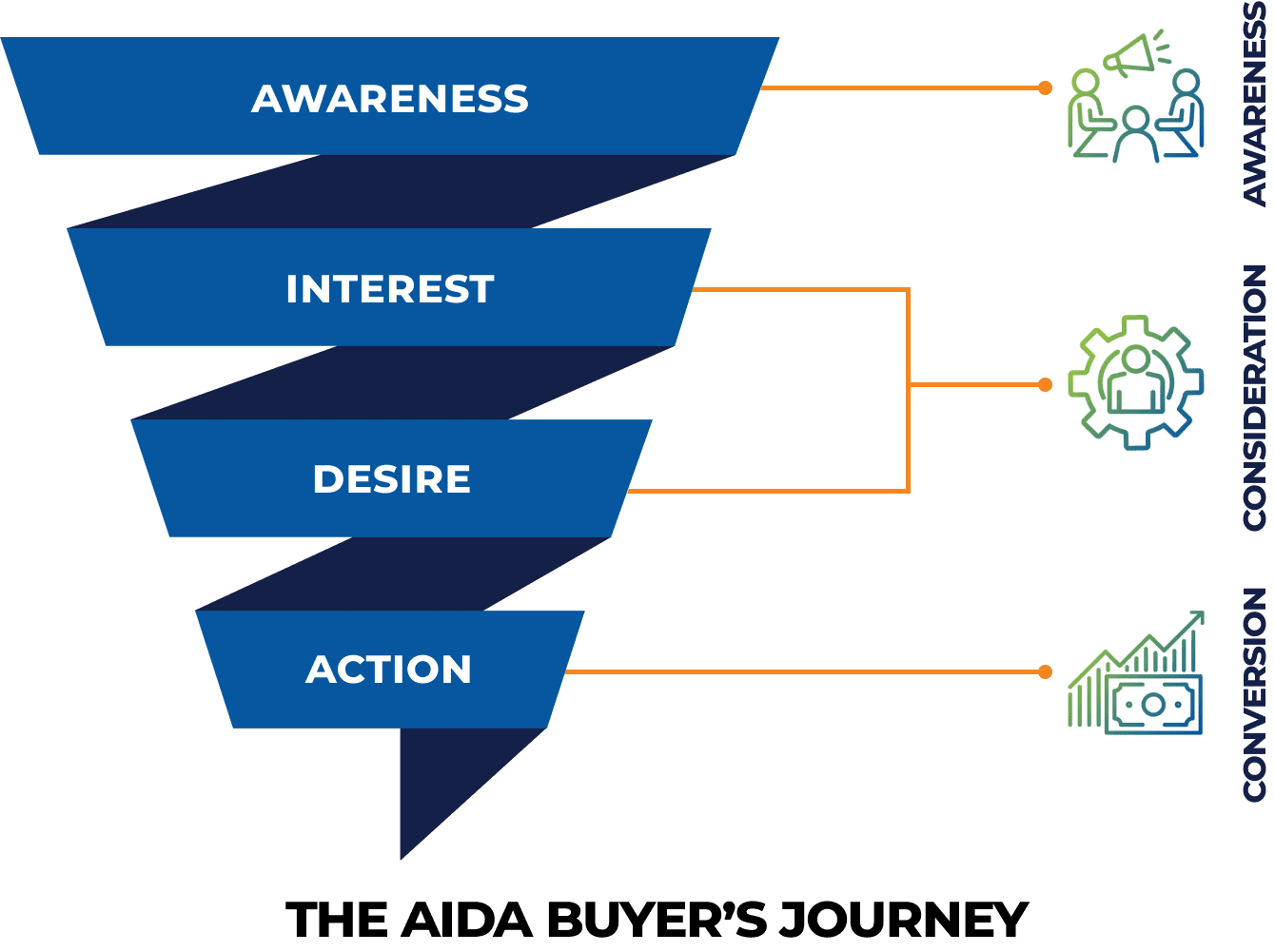
Did you know a visitor on your website forms an opinion in 0.05 seconds to form an opinion — you only have a fraction of time to impress them before they click away. How do you get your web visitors to stay, browse, and take action?
The ultimate secret to getting whatever you want in life (including keeping someone on your website) is this: deliver value. When you watch a funny video on YouTube or watch your favorite TV show, the “value” being delivered is entertainment.
When someone visits your website, they are looking for information — perhaps they are doing general research about your industry, for example, “How many monthly users does ChatGPT have?” Or they may be searching for the answer to a buying question such as, “How much does an SEO audit from EWR Digital cost and what is involved?” Or even, “What is your business’s address?”
Four STAGES OF THE CUSTOMER JOURNEY
These different types of website visitors to consider when building a website (cold, warm, hot) come to you at different stages in the “Customer Journey” — Awareness, Consideration, and Decision. If you want a successful, profitable, high-converting, useful website, then you must continually optimize your web pages (especially your home page) to help these people at different stages of their journey:
- Awareness Stage: your visitor is learning about their issue — seeking blog posts and educational videos to solve general problems. One of our clients, ROSI Office Systems (a furniture supplier) has a “Work From Home” section that specifically addresses the productivity and comfort needs of a home office. It’s important that you consider blog posts and FAQ’s to address general questions.
- Consideration Stage: your visitor is aware of their problem but perhaps comparing different options — researching possible solutions, reading reviews, and comparing you to your competitors. Peter’s Pressure Washing, a service company in Tampa Bay, Florida (who provides free same-day estimates for commercial and residential pressure washing) has a Review page that lists customer testimonials that tell stories about happy customers who appreciated that the workers arrived on-time in a well-marked truck, or that their walkway looked just like it did when they first bought their home.
- Decision Stage: your visitor is ready to make a purchase (or take some sort of action) and is on your website looking for your contact phone number, address, or hours of operation. BitWallet is a cryptocurrency app that allows individuals to purchase bitcoin and businesses to accept bitcoin. The website has a “BitMap” showing locations in the Houston area where the app is accepted.
- Action Stage: this is crucial because it represents the culmination of the preceding steps in the funnel. After capturing the prospect’s attention, sparking their interest, and nurturing their desire, the marketer needs to prompt them to take action to achieve the ultimate goal.To optimize the Action step, marketers often employ clear and compelling calls-to-action (CTAs) that explicitly tell the prospect what they should do next. CTAs can be placed strategically throughout marketing materials, such as landing pages, emails, social media posts, and advertisements.Additionally, it’s essential to make the action as easy and frictionless as possible for the prospect. This means minimizing the number of steps required to complete the action and providing a seamless user experience. Marketers may use plugins or web design and development tactics like simplified forms, one-click purchasing options, pop-ups and clear instructions to facilitate the action-taking process.
Once you understand these four tiers of website visitors, you can look at competitor research or other company websites in your area and have a new understanding about your goals for these four types of visitors such be.
1. High-Quality Hosting Provider
Before you start thinking about website design, you need to find the best possible hosting. A powerful hosting provider will make sure your website is always up and running, help you improve loading speed, and handle any technical issues that come up. You really want to have someone that you can go to if you need website maintenance and support.
Choose a plan based on the traffic you expect, the content you post, and your website’s purpose and security level needed of the infomation on your website. If you’re starting with a new website, go for a more basic plan until you grow your traffic.

2. Website Speed and Loading Time
Did you know that users expect websites to load in less than 3 seconds? If a website takes even 4 seconds to load, the bounce rate goes up to 90%, which means users click away, never to come back again. This is why you need a reliable hosting provider, a lightweight web design, and optimized images.
For businesses, slow websites mean fewer conversions and lost visitors. Users are impatient, and if they don’t get what they need within the first 3 seconds (or less), they’ll exit and go somewhere else.
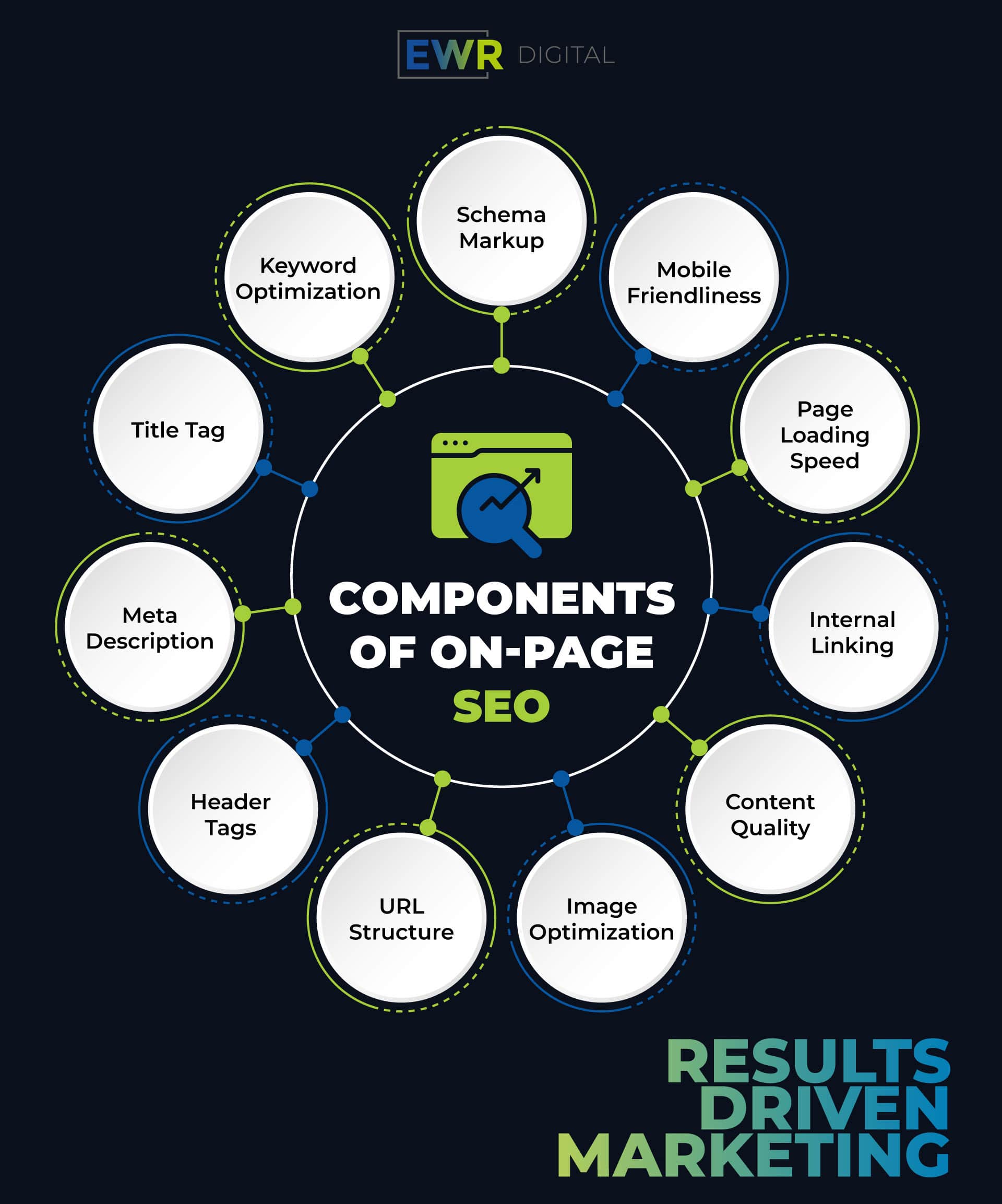
3. TECHNICAL SEO (SEARCH ENGINE OPTIMIZATION)
Users expect websites to load in less than 2-3 seconds. If your site takes even 4 seconds to load, your bounce rate will skyrockets to 90%, and your visitor will click away, never to return.
Your hosting provider should be reliable so that your website is always up and running, loads quickly, and is free of technical errors. Secure your site with HTTPS/SSL certificates.
Use a lightweight web design, and optimized images. For businesses, slow websites result in fewer conversions and lost visitors. You can enter your website address into Google’s PageSpeed Insights tool or Pingdom to measure its speed.
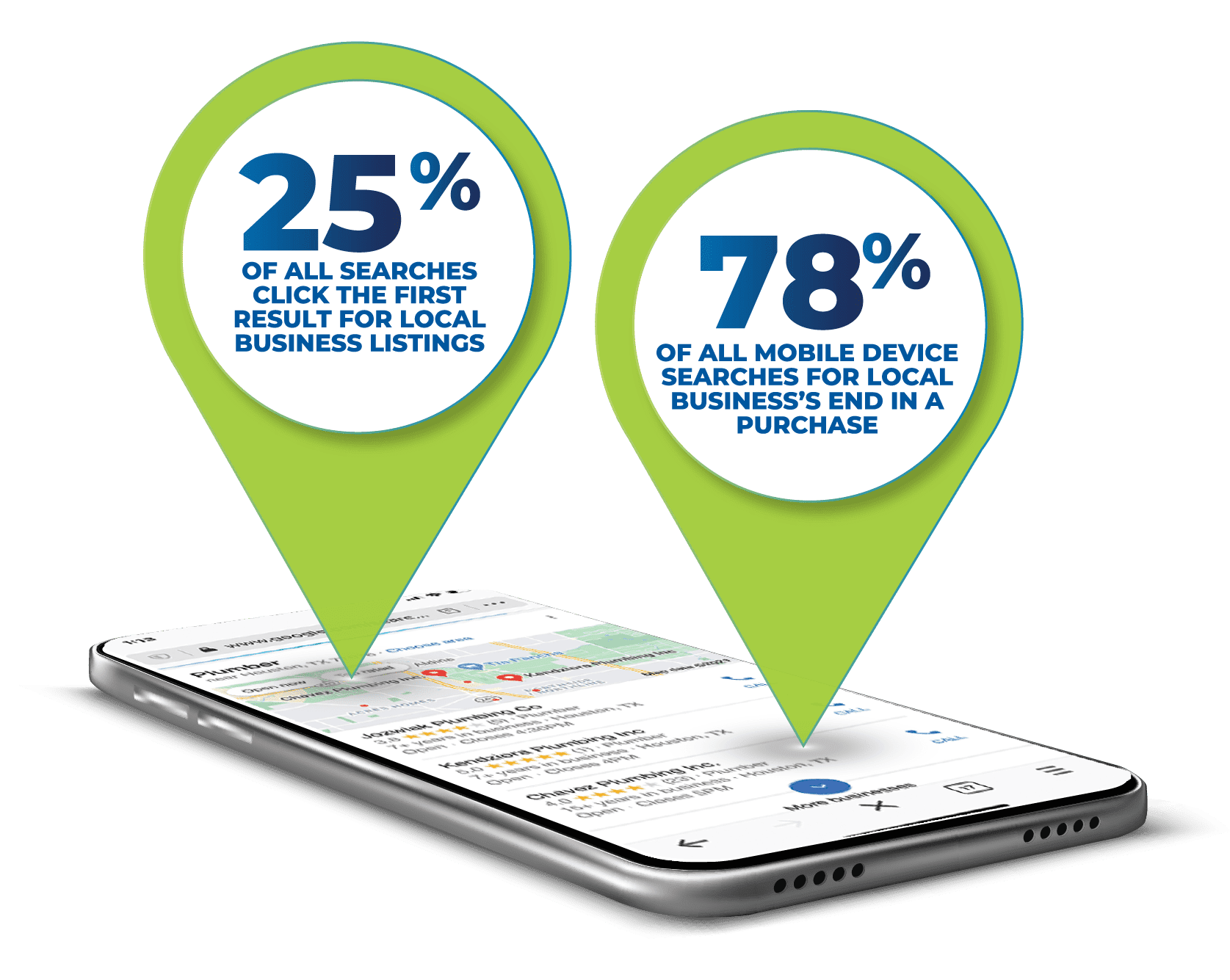
MOBILE-FRIENDLY DESIGN
94% of your website visitors browse your site from a smartphone. Your website needs to look great and function well on smaller screens. 74% of website visitors are more likely to return to a mobile-friendly site and 67% are more likely to buy from such a site.
Test your site’s mobile performance using Google’s mobile-friendly test. This tool will highlight any issues that need fixing to improve performance.
Run your website through the list of technical details to ensure it runs on a solid foundation:
- Create an XML sitemap.
- Properly configure your robots.txt file.
- Set your 404 pages, 301 redirects.
- Specify canonical tags to avoid duplicate content.
- Add schema markup and structured data.
- Enable Accelerated Mobile Pages (AMP).
- Compress images.
- Implement lazy loading.
- Use a Content Delivery Network (CDN) to speed up content delivery.
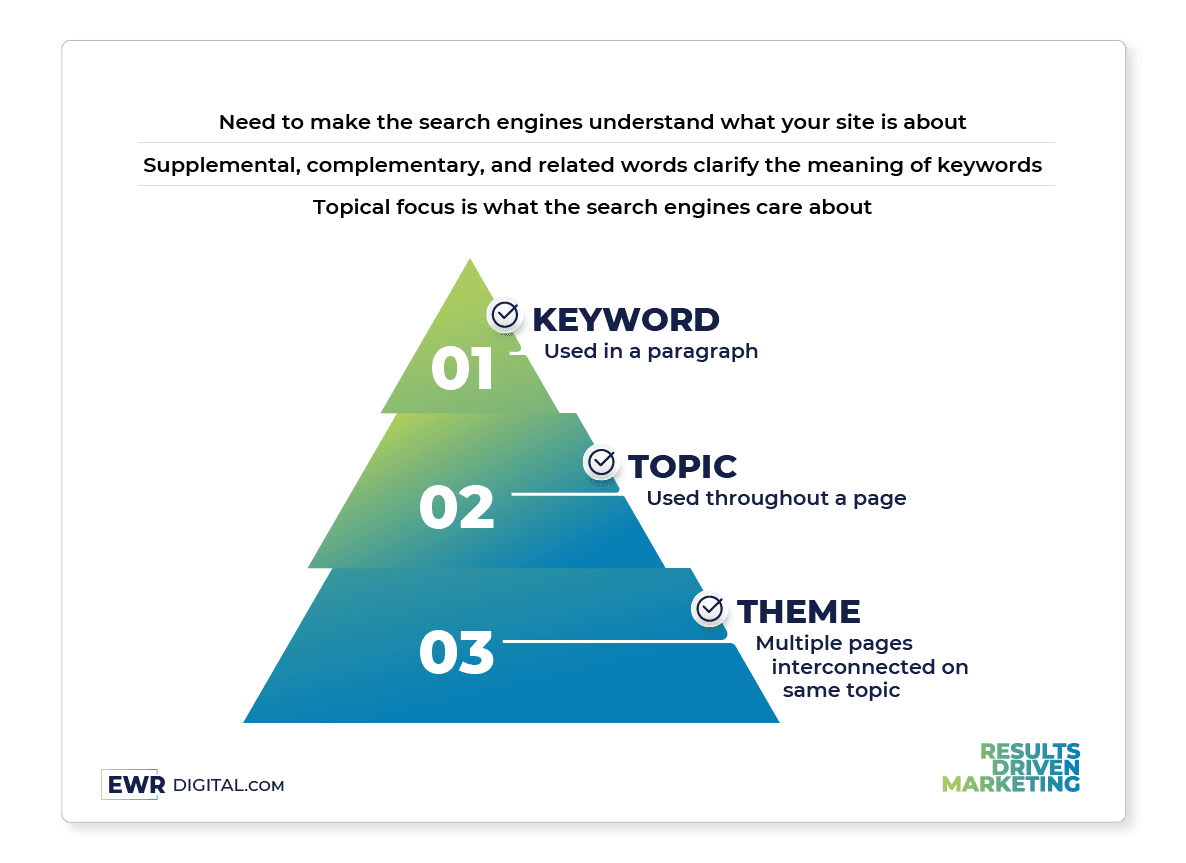
4. WEBSITE CONTENT
In addition to being impatient, webpage visitors are picky about the content they consume. 96% of webpages get ZERO traffic from Google!
Content goes beyond just your homepage and blog — it includes what you say on your About page, Contact page, and Services pages, where visitors get to know your business and form an opinion. Your website content should be customer-centric, aiming to help, inform, and convert. It should also be laid out in a way that is intuitive and easily navigable.
Let’s say a user searches for something on Google and uses a specific keyword. If you have a blog post containing that keyword, but the content doesn’t answer the user’s question or search query, they will leave your site.
Your content attracts and retains users. Keep them interested so they stay on your website and ultimately convert. Produce high-quality, readable content enriched with multimedia elements (images and videos).
Make important information including your phone number, address, and hours of operation, easily accessible on all pages for easy indexing by Google Maps.
Search engines will read each page of your site and rank it based on content, visitors, and activity. The higher you rank, the more users will click on your website. Create website content that attracts visitors, and once they visit, keeps them engaged, then encourages them to convert.
Consider these guidelines:
- Write content that addresses the needs and questions of your audience.
- Ensure your content is engaging and easy to read.
- Use images and videos to enhance your content and keep visitors interested. 91% of people want to see more videos from brands.
- Make sure your contact information, such as phone number, address, and hours of operation, is easy to find.
- Optimize all content for search engines to improve visibility and rankings.
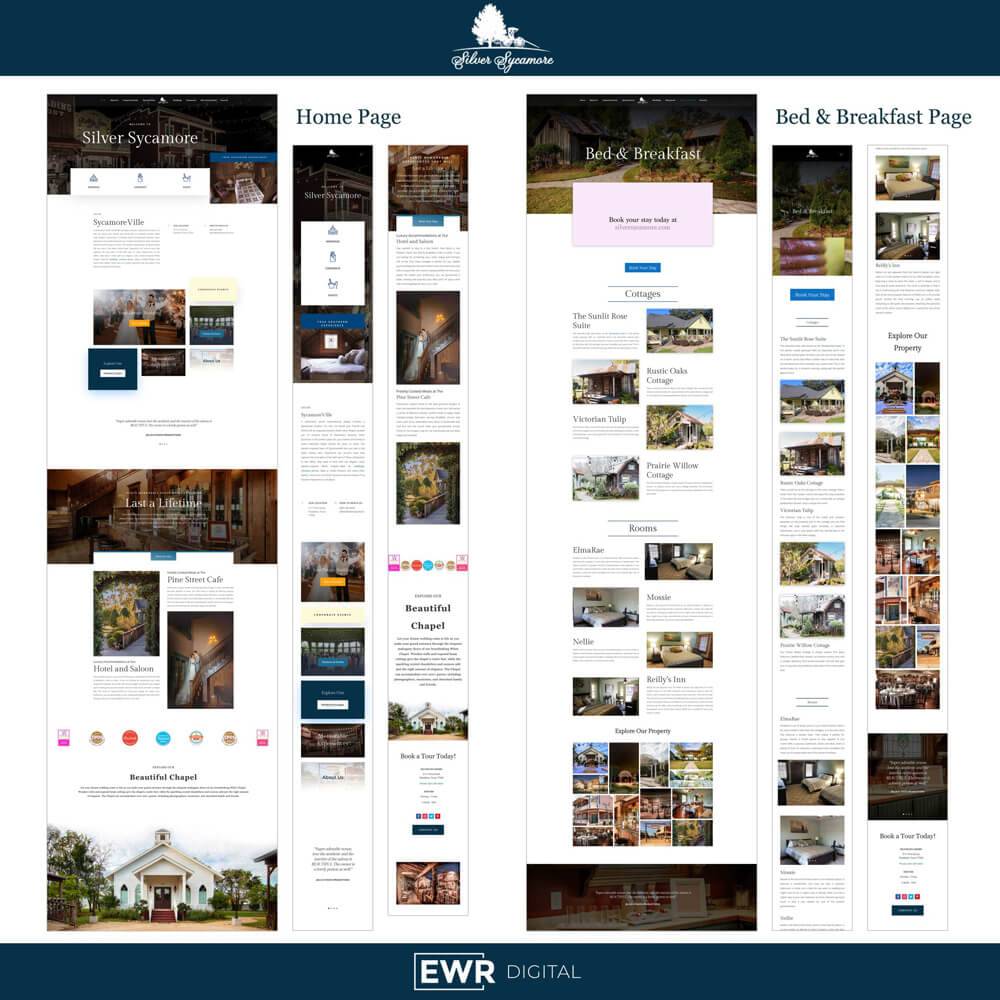
5. LAYOUT AND DESIGN
Web design influences 94% of all first impressions. Structure your website’s layout to make navigation easy — your visitors should be able to find everything at a glance. Think about how visitors will view each page, and what they’re looking for.
Layout includes headers, footers, Call To Action buttons, social share buttons, menus, forms, banners, and logo placement. Use visual elements like your logo, colors, typography, graphics, and images to keep your visitors clicking through your site. Personalized CTA’s in button form convert 42% better than generic Calls-to-Action.
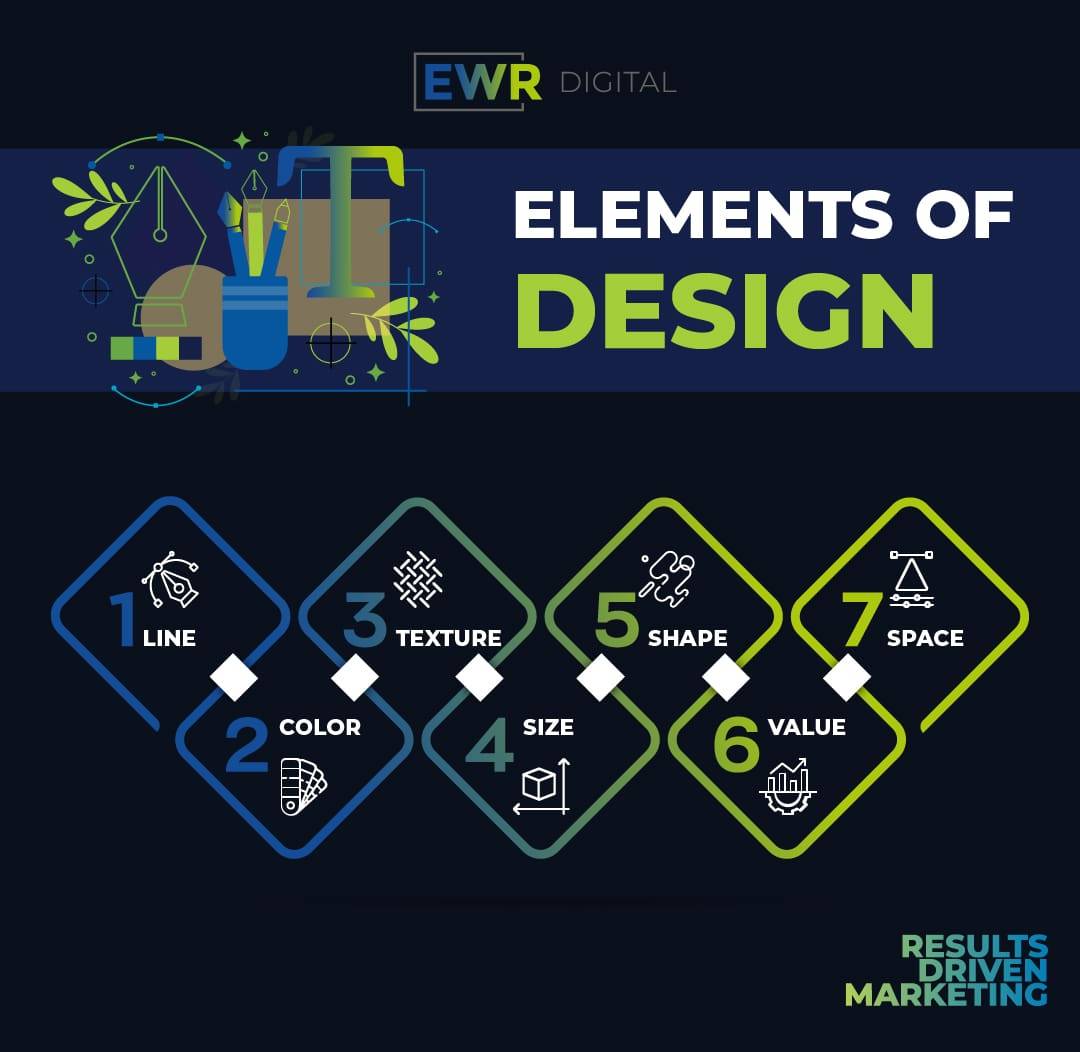
WEBSITE LAYOUT CHECKLIST
Make several passes on your website and pages:
- Focus on intuitive navigation, clear CTAs, and a clean design.
- Use consistent fonts, colors, and visuals that align with your brand.
- Check that your title tags, meta descriptions, and header tags (H1-H6) are optimized and compelling.
- Link internally and externally.
- Check the breadcrumb navigation on your pages so visitors can “walk up” the site hierarchy.
Stick to one or two main colors and one complementary color to avoid overwhelming visitors. Your colors depend on your target audience — for instance, a SaaS business might use blue, green, or orange, while a parenting website might benefit from bright, gentle, pastel colors. Look at your competitors’ websites for color palette inspiration.
Your website should be visually appealing, optimized for a great user experience, and positioned for better search engine rankings.

6. USER EXPERIENCE (UX)
User experience affects how your visitors interact with your site, as well as your search engine rankings — search engines like Google pay close attention to bounce rates, time on page, and clickthrough rates. This means that the more time visitors spend on your website, the higher it will rank.
User experience is about giving your visitors a simple experience where they can easily find what they need. This involves having a straightforward menu design, clean pages, a defined color palette, easy-to-read text, and quick loading times.
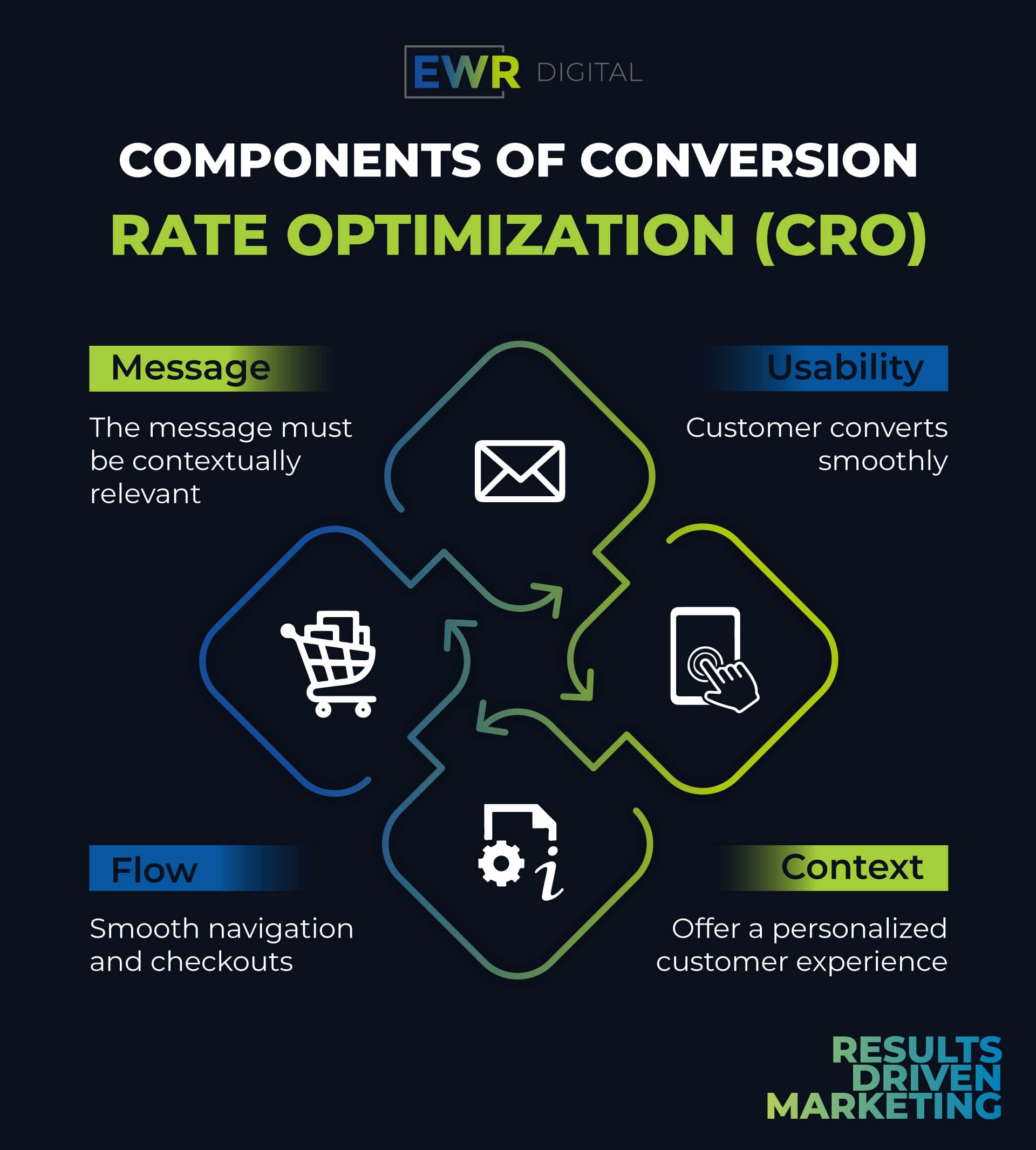
ELEMENTS FOR A HIGH CONVERTING WEBSITE EXPERIENCE
Your website needs easy-to-navigate menus, clean pages, fast loading times, clear Calls-To-Action, testimonials, FAQs, consistent NAP (Name Address Phone) details, and social media integration. Your contact page and about page should be complete, consistent, and easy to find. Here are the key elements for a great user experience:
- Consider the user’s journey and make navigation intuitive.
- Limit the depth of your navigation to three levels to avoid overwhelming users.
- Use clear and consistent names for pages and sections.
- Use breadcrumb navigation to help visitors understand their location within the site and easily navigate back.
- Use internal links to guide users to related content and improve SEO.
Your website could include key sections such as:
- The Home Page: which should contain a compelling heading, intuitive navigation, visual appeal, brand consistency, and a strong call-to-action
- About Us: which could possibly be divided into Our Story, Our Team, Careers, or Contact Us pages if that makes sense)
- Services: or a Store or Directory if applicable
- Blog: sort of educational section, including Resources, Testimonials, a Portfolio/Gallery
- Legal pages including Privacy Policy and Terms of Service

WEB PAGE STRUCTURE: ONE IDEA PER ROW
When building your website, write the content BEFORE making decisions about layout and structure. Think of your web pages in terms of “rows” — with one idea per row. A web page should progress from a headline, to the body content, then to some sort of call-to-action.
You will adjust your website’s design and structure over time. Months after we build a website for a client, we may notice it makes sense to create even more specific pages to give visitors exactly what they’re looking for.
Ensure your NAP (Name, Address, Phone number) details are consistent across all platforms. For local SEO, Integrate Google Maps for easier navigation and include social media buttons to encourage sharing and engagement.
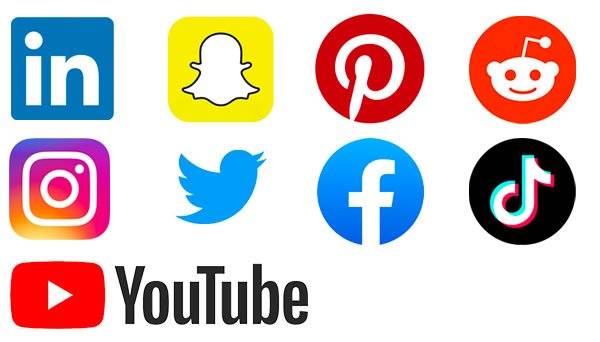
SOCIAL MEDIA LINKS
Social media links connect your website visitors to your social media profiles, providing additional channels for communication and content sharing.
May will say place social media icons in your header or footer on every page. (I disagree). I believe you should only have them in the body of your about us page and maybe on your contact page, list only the social media profiles your very active on alongside other contact information. Include social sharing buttons on blog posts, articles, and other content to encourage sharing and increase reach. If you content is high quality and engaging. If it is not, turn off comments as you will just be openning yourself up for spam and cyber attacks.
FREQUENTLY ASKED QUESTIONS
Frequently asked questions are a useful communication structure because it speaks directly to a visitor’s search query. Use keywords and phrases in questions and answers to improve search engine visibility. Consider a dedicated FAQ page, placing your top 3 to 5 questions on your home page, and answering Frequently Asked Questions on your various pages, where it makes sense.
Keep your FAQ’s updated with new information and based on common customer queries.
Frequently Asked Questions are your tool to enhance user experience, provide valuable information, and encourage visitor engagement across multiple platforms.

7. MONITORING AND UPDATES
Use Google Analytics to track your website’s performance and gather valuable insights. Regularly update your content keeps it fresh and relevant, helping to retain visitor interest. Conduct periodic performance audits to identify and address website issues.
Be sure your website uses proper security including firewalls and brute force protection to protect your site against malware and hacking. Perform regular backups.
Here are key steps to maintain and improve your website:
- Set up Google Analytics and other tracking tools to monitor performance.
- Regularly update your content to keep it fresh and engaging.
- Conduct periodic performance audits to identify and fix issues.
- Implement firewalls and malware scanning.
- Perform regular backups to protect your data.
- Gather user feedback to continuously improve your site.

8. BRAND CONSISTENCY
Make sure your website consistently reflects your brand identity on every page — this means using the same logos, color schemes, fonts, and messaging. Here’s how to maintain brand consistency:
- Use the same logo across all pages.
- Stick to your brand’s color scheme.
- Apply consistent fonts and typography.
- Ensure your messaging and tone are uniform.
This will strengthen your brand’s presence and make a lasting impression on your visitors.
*2024 Update Considerations:
9. ENGAGEMENT AND INTERACTION
Incorporate features that encourage visitor engagement and interaction to keep your audience engaged and build a sense of community. Comment sections, social sharing buttons, live chat support, and interactive elements like quizzes or surveys can make a significant difference.
Here are some key engagement features to consider:
- Comment sections to foster discussions
- Social sharing buttons to increase reach
- Live chat support for immediate assistance
- Interactive elements like quizzes and surveys to engage visitors
These features can help retain visitors, encourage interaction, and create a more vibrant online community. 60% of customers say they are more likely to revisit a website if it uses live chat and 42% of customers prefer live chat on the web over phone support.
10. CONVERSION OPTIMIZATION
Optimize your website for conversions. Where is the bottleneck — where might visitors get confused, bored, or otherwise drop off? Design landing pages specifically for your campaigns and conduct A/B testing to find what works best. Make sure the checkout or contact process is smooth and user-friendly to turn visitors into customers or leads.
Here are key strategies for conversion optimization:
- Use clear and compelling CTAs
- Design targeted landing pages for campaigns
- Conduct A/B testing on different elements
- Ensure a smooth and user-friendly checkout or contact process
These strategies will help increase conversions and make your website more effective at turning visitors into loyal customers or valuable leads.
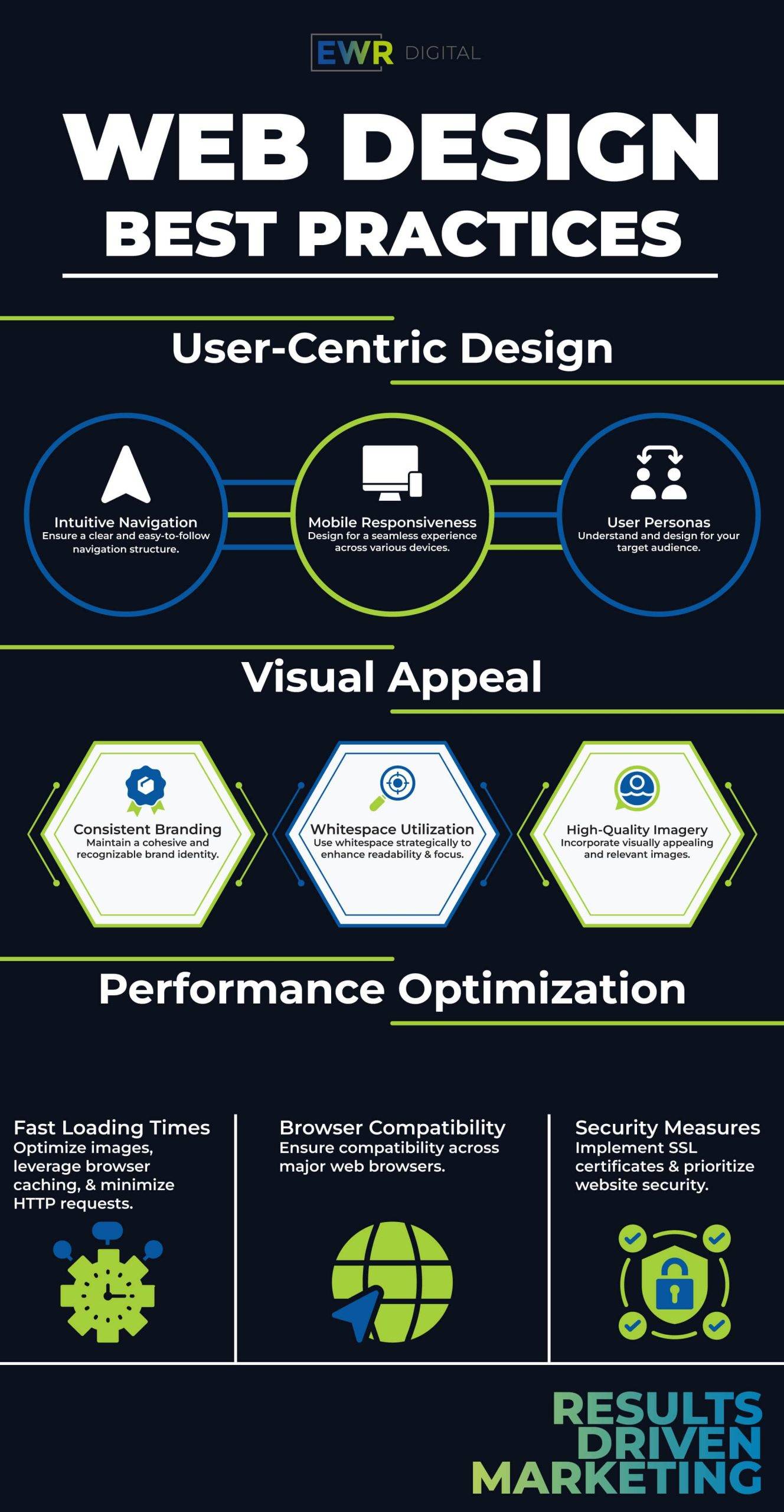
CONSIDER THESE CRUCIAL FACTORS WHEN DESIGNING WEBSITES FOR BUSINESSES
You can create and maintain a website that represents your business, engages visitors, and converts them into loyal customers. Consider partnering with an expert agency such as EWR Digital who can meet your unique needs.
We’re all about helping you grow your brand and market share. We love solving marketing problems, creating great messaging that sticks, and optimizing your campaigns. We are results-oriented, knowledgeable, and accountable.
Ready to take your website to the next level? Contact us today and let us bring your vision to life. We look forward to helping you achieve your business goals and delivering marketing success for your brand.
